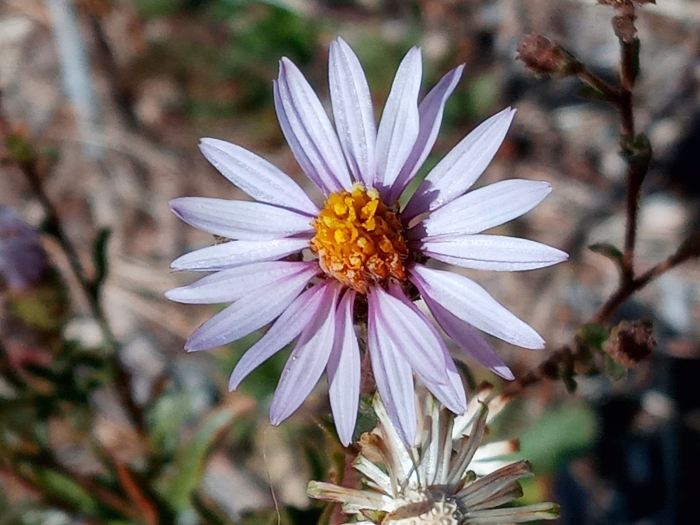California Aster
(Corethrogyne filaginifolia)
California Aster (Corethrogyne filaginifolia)
/
/

Daniel S.
CC BY 4.0























































Estimated Native Range
Summary
California Aster is valued for its drought tolerance and ability to attract pollinators, including bees and butterflies, making it a beneficial addition to native plant gardens, xeriscapes, and wildlife habitats. It is commonly used in restoration projects, as ground cover, and in borders. This plant thrives with minimal water once established, preferring well-drained soils and tolerating a range of soil types from sandy to loamy. It is adaptable to full sun or part shade conditions. While generally low-maintenance, it can be susceptible to powdery mildew in humid conditions and may require occasional pruning to maintain a compact form.CC BY-SA 4.0
Plant Description
- Plant Type:
- Height: 0.5-3 feet
- Width: 0.5-1.5 feet
- Growth Rate: Moderate
- Flower Color: Pink, Purple
- Flowering Season: Summer, Fall, Winter
- Leaf Retention:
Growth Requirements
- Sun: Full Sun, Part Shade
- Water: Low
- Drainage: Fast, Medium
Common Uses
Bee Garden, Bird Garden, Border Plant, Butterfly Garden, Deer Resistant, Drought Tolerant, Groundcover, Low Maintenance, Potted Plant, Rock Garden, Salt Tolerant, Showy Flowers, Street Planting
Natural Habitat
Coastal sage scrub, chaparral, and open woodlands
Other Names
Common Names: Sand-Aster , California Sandaster , California Aster , Whiteleaf Sandaster
Scientific Names: Corethrogyne filaginifolia , Lessingia filaginifolia , Corethrogyne filaginifolia var. linifolia , Corethrogyne leucophylla , Lessingia filaginifolia var. filaginifolia , Corethrogyne filaginifolia var. filaginifolia , Corethrogyne filaginifolia var. californica , Corethrogyne filaginifolia var. virgata , Corethrogyne filaginifolia var. incana , Corethrogyne filaginifolia var. brevicula
GBIF Accepted Name: Corethrogyne filaginifolia (Hook. & Arn.) Nutt.